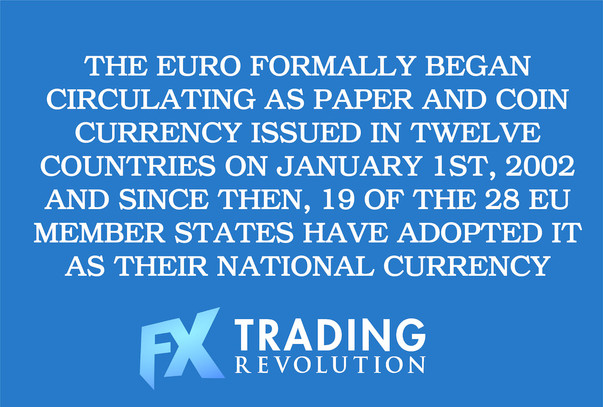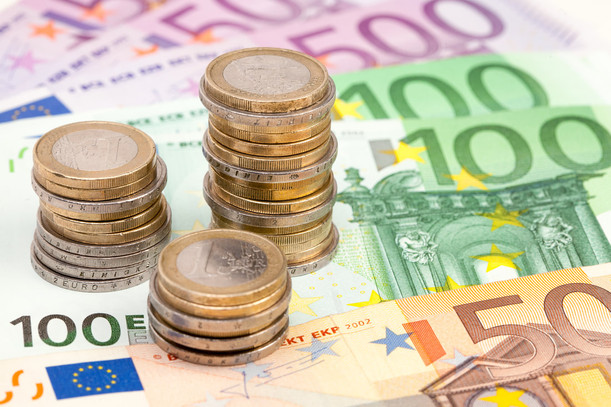Perhaps one of the most important events that changed the foreign exchange market in the last few decades has been the introduction of the new single currency to be used in the European Union that we know today as the Euro.
The Euro effectively replaced the national currencies of most of the EU countries and is now exclusively used in their internal commerce as the domestic currency.
The sections below cover how this interesting process came about as European countries repeatedly attempted to control fluctuations between their currencies in order to foster trade and economic activity, and eventually integrated their numerous currencies into one common currency for all.
From the Snake to the ERM
The post-Bretton Woods currency snake system used by European countries had pretty much failed by 1977, however, the need for controlling exchange rate fluctuations within Europe was still alive in many Western European countries as stable exchange rates were seen as highly beneficial for the whole continent.
This led them to jointly form the European Monetary System (EMS) in 1979 that was based on its currency snake predecessor.
The replacement regime had an ERM or Exchange Rate Mechanism that maintained relatively stable central parity levels or values between currencies participating in the system. The ERM allowed rates to trade inside a tight range of 2.25% above and below these central values.
Whenever exchange rates diverged by more than 2.25% from their central levels, the relevant central banks needed to adjust interest rates and/or intervene in the currency market appropriately. This process was to continue until the divergent currency pair was brought back within its desired range.
The U.K.’s Pound Sterling and the Italian Lira were pushed out of the ERM in September 1992 by a wave of speculation coming after the German unification of 1990.
The following year, a number of other currencies also came under attack, including the French Franc. This led to the eventual widening of the ERM’s trading bands to 15% in August 1993, although parity levels remained unchanged. Despite the wider bands, yet another speculative crisis hit the system in March of 1995.
The Rise of the Euro
Europe’s official solution to the failure of the ERM was for as many nations as possible to adopt a single consolidated currency. The Euro was first named in 1995 and was subsequently introduced as an accounting currency for electronic transactions on January 1st, 1999.
The Euro’s value was initially set at par with the European Currency Unit or ECU, a basket currency that had been used in setting the former ERM’s parity levels.

The Euro formally began circulating as paper and coin currency issued in twelve countries on the first day of 2002. Since then, 19 of the 28 EU member states have adopted the Euro as their national currency plus two countries which are not members of the EU – Kosovo and Montenegro.
The 19 members of the European Union that are using the Euro as their national currency comprise the single currency area within the EU known as the Eurozone.
The Eurozone was founded in 1999 by the following 11 EU member states Austria, Belgium, Finland, France, Germany, Ireland, Italy, Luxembourg, the Netherlands, Portugal, and Spain.
Greece joined shortly thereafter once it met the requirements in 2000. It was then followed by Slovenia in 2007, Cyprus and Malta in 2008, Slovakia in 2009, Estonia in 2011, Latvia in 2014 and Lithuania in 2015.
As per the EU legislation, all EU member states are required to adopt the Euro at some point in the future. However, there have been some which have rejected doing so such as the UK and Denmark.
The Euro has in recent years come under speculative pressure due to the Greek sovereign debt problem. Nevertheless, its existence represents an impressive economic experiment that unifies the currencies of a highly diverse group of countries that occupy a similar geographical region.
The outcome of this experiment remains to be seen in the years and decades ahead and more importantly, the answer to the question of whether the Euro will survive or not.
ERM II is Introduced
The ERM II was created in 1999, the same year that the Euro was officially introduced, for countries unable or unwilling to join the Eurozone for some reason.
Under this new system, which initially included just the currencies of Greece and Denmark, a currency is permitted to trade within a 15% band above and below a central parity rate set by the value of the Euro.
Countries that have already joined the European Union need to have their currencies participate in the ERM II for two years or more before being integrated into the Euro to become a part of the Eurozone.





